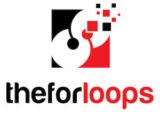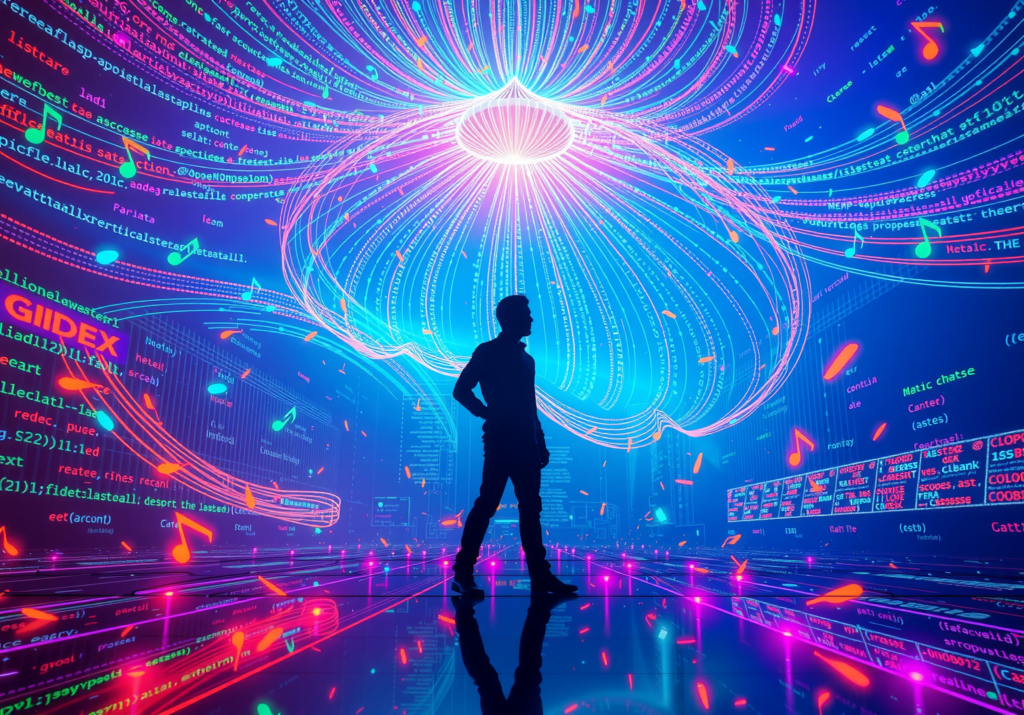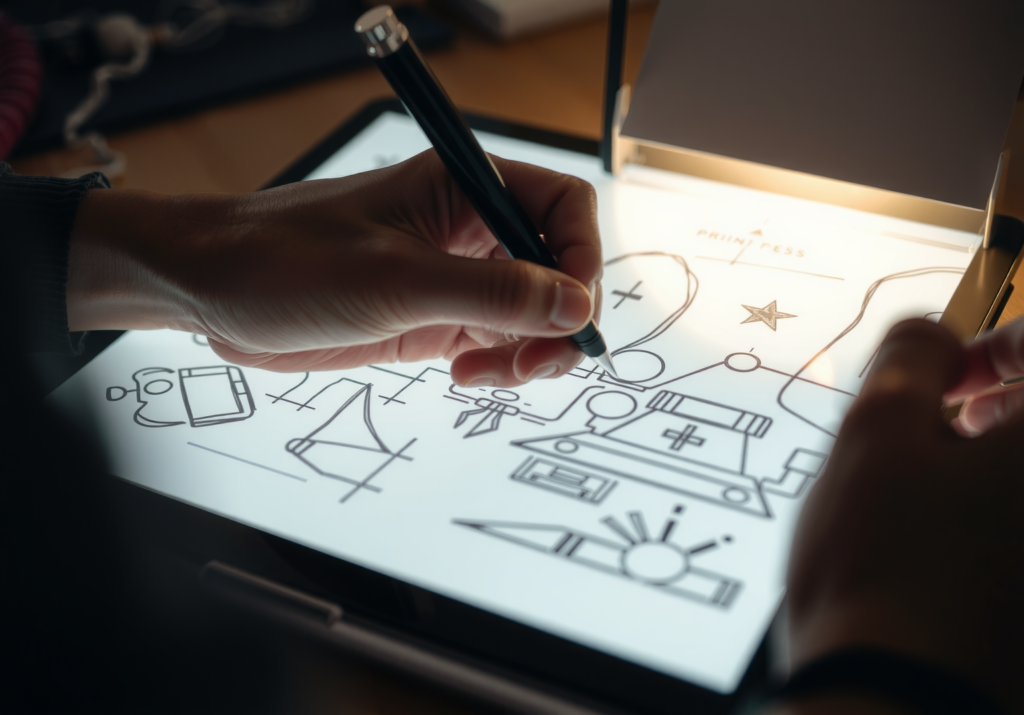The Artistry of Code: Where Logic Dances with Creativity
Ah, coding! The magical realm where logic meets creativity, and where every line of code is a brushstroke on the canvas of technology. You see, programming isn’t just about slinging syntax and debugging errors; it’s a delightful blend of structured thought and imaginative flair. Think of it as a symphony where each note (or line of code) contributes to a harmonious masterpiece.
Defining the Dual Nature of Programming
At its core, coding is the process of crafting instructions—known as code—to guide a computer in performing specific tasks. These instructions are written in various programming languages, each with its own quirks and charms. But here’s the kicker: while coding is rooted in logical processes, it thrives on creative thought. Let’s break it down:
- Logical Processes: Think algorithms, data structures, and the meticulous art of debugging. This is where the science of programming shines.
- Creative Thought: Enter the realm of innovative solutions, elegant designs, and user experiences that make you go, “Wow!” This is where the artistry comes alive.
Examples of Programming as an Art Form
Now, you might be wondering, “Can programming really be considered art?” Absolutely! Let’s look at a few examples that illustrate this beautiful synergy:
- Marpi Studio’s ‘New Nature’: This project creates a digitally interactive petting zoo, showcasing how programming can animate virtual organisms. It’s a perfect example of how code can breathe life into art.
- Generative Art: Artists like Casey Reas and Joshua Davis use algorithms to create stunning visual pieces that evolve over time. Here, coding is not just a tool; it’s the medium of expression.
- Game Development: Games like Journey and Shadow of the Colossus are not just technical feats; they are emotional experiences crafted through the delicate balance of code and creativity.
The Dichotomy of Coding: A Rollercoaster Ride
Coding is a thrilling rollercoaster that swings between the subjective and the objective. One moment, you’re lost in the creative process of designing a user interface, and the next, you’re knee-deep in the nitty-gritty of bug fixing and performance optimization. It’s exhausting, exhilarating, and utterly rewarding.
Why Embrace the Artistic Side of Coding?
Integrating creativity into programming isn’t just a nice-to-have; it’s essential for innovation. Here’s why:
- Enhanced Problem-Solving: Creative thinking allows programmers to approach challenges from different angles, leading to unique solutions.
- Increased Engagement: When programmers infuse creativity into their work, they’re more likely to stay motivated and passionate about their projects.
- Better User Experiences: A creative approach leads to more intuitive and enjoyable applications, ultimately delighting users.
So, whether you’re a seasoned developer or an aspiring coder, remember that programming is not just a science; it’s an art form waiting for you to explore. Embrace the duality, and let your creativity flow through your code!
The Cognitive Circus: How Biases Juggle Your Programming Creativity
Welcome to the wild world of programming, where logic meets creativity in a dazzling dance. But hold on to your keyboards, folks! Just when you think you’re in control, cognitive biases swoop in like a rogue magician, pulling the strings behind the scenes. Let’s unravel this circus of cognitive quirks that can stifle your creative genius.
Meet the Biases: Your Uninvited Guests
Cognitive biases are like those party crashers who show up uninvited and wreak havoc on your carefully planned soirée. Here’s a quick rundown of the most notorious offenders:
- Confirmation Bias: This sneaky little devil leads you to seek out information that confirms your existing beliefs. In programming, it can cause you to write test cases that only validate your code instead of challenging it. Talk about a self-fulfilling prophecy!
- Dunning-Kruger Effect: Ever met someone who thinks they’re a coding wizard after a weekend of tutorials? This bias makes you overestimate your skills, leaving you blissfully unaware of the vast ocean of knowledge still to explore.
- Optimism Bias: This one’s a classic! It convinces you that your code will work flawlessly on the first try. Spoiler alert: it rarely does. This bias can lead to a lack of thorough testing and debugging, which is like baking a cake without checking if you have all the ingredients.
- Availability Bias: This bias can lead you to rely on the first solutions that come to mind, often ignoring better options. It’s like choosing the first restaurant you see instead of exploring the culinary gems hidden around the corner.
How These Biases Stifle Your Creative Flow
Now that we’ve met the biases, let’s talk about how they can put a damper on your creative coding:
- Limiting Perspectives: When you’re trapped in a confirmation bias bubble, you miss out on innovative solutions that could elevate your code from mundane to magnificent.
- Overconfidence: The Dunning-Kruger Effect can lead to a false sense of security, making you less likely to seek help or explore new ideas. Remember, even the best chefs consult their cookbooks!
- Neglecting Testing: Optimism Bias can result in a lack of rigorous testing, leaving your code vulnerable to bugs that could have been easily squashed.
- Stagnation: Availability Bias can keep you stuck in a loop of familiar solutions, preventing you from experimenting with new techniques or technologies.
Breaking Free: Strategies to Overcome Cognitive Biases
Fear not, brave coder! Here are some strategies to help you break free from the shackles of cognitive biases and unleash your creative potential:
- Seek Diverse Perspectives: Collaborate with fellow programmers to gain fresh insights and challenge your assumptions. Two heads are better than one, especially when one of them is filled with creative ideas!
- Embrace Continuous Learning: Stay humble and curious. The tech world is ever-evolving, and there’s always something new to learn. Attend workshops, read articles, and don’t shy away from asking questions.
- Practice Critical Thinking: Train your brain to question your own assumptions. When you write code, ask yourself: “What if I’m wrong?” This simple question can open the door to innovative solutions.
- Test, Test, Test: Adopt a rigorous testing mindset. Write test cases that challenge your code, not just those that confirm it works. Think of it as a safety net for your creative leaps!
In the grand circus of programming, don’t let cognitive biases steal the spotlight. Instead, embrace the chaos, challenge your thinking, and let your creativity shine through the code you write. After all, the best programmers are those who can juggle both logic and imagination with finesse!
Unleashing Your Inner Da Vinci: Creative Coding Techniques
When it comes to coding, the answer is a resounding yes—creativity is not just a nice-to-have; it’s a must-have! Coding is a delightful dance between logic and imagination, where the right blend can lead to software that not only functions but also dazzles. So, how do you sprinkle a little creativity into your coding routine? Let’s dive into some practical tips and techniques that will have you coding like the artistic genius you were born to be.
1. Embrace Constraints as Catalysts
Believe it or not, limitations can be your best friends. When faced with constraints, your brain kicks into high gear, pushing you to think outside the proverbial box. Here’s how to turn those constraints into creative fuel:
- Set Boundaries: Give yourself specific parameters for a project. For example, limit your code to a certain number of lines or use only a specific set of functions.
- Challenge Yourself: Try to solve a problem using a different programming language or framework than you’re used to.
- Iterate: Create multiple versions of a solution, each with a unique twist. This not only enhances creativity but also improves your problem-solving skills.
2. Merge Art with Code
Why not let your artistic side shine through your code? Here are some projects that beautifully blend creativity and technical skills:
| Project Idea | Description |
|---|---|
| Interactive Art Installations | Use platforms like Processing to create visual art that responds to user interactions. |
| Generative Music | Write algorithms that generate music based on user input or environmental data. |
| Data Visualization | Transform complex data sets into stunning visual representations using libraries like D3.js. |
3. Collaborate and Share
Two (or more) heads are better than one, especially when it comes to creativity. Here’s how to foster collaboration:
- Join Coding Communities: Engage with platforms like GitHub or Stack Overflow to share ideas and get feedback.
- Pair Programming: Work alongside another coder to brainstorm solutions and inspire each other.
- Attend Hackathons: These events are a goldmine for creative collaboration, where you can meet like-minded individuals and tackle challenges together.
4. Experiment with New Tools
Just like a painter needs a variety of brushes, a coder should explore different tools and languages. Here’s a quick list of tools to consider:
- Arduino: Dive into hardware and software integration for creative projects.
- Unity: Create interactive experiences and games that showcase your coding prowess.
- p5.js: A JavaScript library that makes coding visual art a breeze.
In the end, coding is not just about writing lines of code; it’s about crafting experiences that resonate with users. By embracing creativity, you can elevate your coding game to new heights, transforming mundane tasks into masterpieces. So, what are you waiting for? Grab your metaphorical paintbrush and start coding your way to innovation!
The Artistic Evolution of Code: A Canvas of Creativity
Ah, the world of programming! A realm where logic meets artistry, and where every line of code can be a brushstroke on the canvas of technology. Creative coding transcends mere functionality; it’s about crafting visually stunning and user-friendly interfaces that resonate with users on a deeper level. Think of it as the culinary arts of the digital age—where the ingredients are algorithms, and the dish is a seamless user experience.
Creative Coding: More Than Just Functionality
- User-Centric Design: It’s not just about what the code does; it’s about how it makes users feel. Consider their needs, design intuitive interactions, and create experiences that leave them wanting more.
- Inventive Problem-Solving: Creativity in coding allows programmers to develop algorithms that not only optimize performance but also introduce functionalities that go beyond the mundane.
- Exploration of Alternatives: Embrace the unconventional! Creative coding encourages programmers to explore different perspectives and devise elegant solutions that might just be the next big thing.
Is Programming an Art, Science, or Culinary Delight?
So, is programming an art, science, or a delightful blend of all three? Much like cooking, anyone can whip up a meal without formal training. Similarly, programming can be approached with a creative flair, allowing for a unique expression of ideas and solutions.
The Artistic High of Software Development
When done right, software development can evoke a creative high akin to that of an artist unveiling their masterpiece. Just as a buyer admires a painting hung above the fireplace, users should revel in the beauty of well-designed software—both in its internal mechanics and external aesthetics.
Creative Coding: The New Age Art Movement
As we navigate through an increasingly digital landscape, creative coding is emerging as a contemporary art movement. It’s not just about writing code; it’s about expressing societal challenges through digital mediums. From digital paintings to data visualizations and even robotics, programming’s versatility allows for a rich tapestry of artistic expression.
Programming Languages: A Palette for Artistic Expression
The evolution of programming languages mirrors a growing appreciation for the artistic side of coding. Take, for instance, the open-source computational embroidery library PEmbroider, which empowers artists to create generative embroidery through code. This shift signifies that programming languages are not just tools for efficiency but also canvases for creativity.
Shaping the Future: The Interplay of Creativity and Efficiency
As developers embrace new tools and methodologies, the interplay between human creativity and machine efficiency will undoubtedly shape the future landscape of programming. The artistic aspects of coding are becoming increasingly recognized, paving the way for innovations that blend logic with creativity.
Resources for the Aspiring Creative Coder
For those looking to dive deeper into the world of creative coding, consider exploring resources like Coding Art, a creative programming book based on the Processing platform. It’s a treasure trove of ideas for educators and aspiring coders alike, complete with a companion example library to get your creative juices flowing.
In this vibrant intersection of art and science, the future of programming is not just about writing code; it’s about crafting experiences that inspire and engage. So, grab your metaphorical paintbrush and start coding your masterpiece!
The Harmonious Dance of Logic and Creativity in Coding
Ah, the age-old debate: is programming an art or a science? Spoiler alert: it’s both! Coding is like a well-choreographed dance where logic and creativity twirl around each other, creating a beautiful performance that powers our digital world. Let’s dive into how these two seemingly opposing forces can coexist and even thrive together.
Why Creativity Matters in Coding
- Unconventional Solutions: Creative programmers are the ones who can think outside the box—like finding a way to optimize code that even your high school math teacher would applaud.
- User-Centric Design: Ever used an app that felt like it was designed by a robot? Yeah, that’s what happens when creativity takes a backseat. Engaging user interfaces are a product of creative thought.
- Innovative Algorithms: The best algorithms are often born from a blend of analytical thinking and creative problem-solving. Think of it as a recipe where both the chef and the ingredients matter.
Overcoming Cognitive Biases to Foster Creativity
Now, let’s address the elephant in the room: cognitive biases. These pesky little gremlins can stifle creativity faster than you can say “Dunning-Kruger Effect.” Here’s how to kick them to the curb:
- Awareness: Recognize your biases. Are you falling into the trap of confirmation bias, only seeking information that supports your existing beliefs? Time to broaden your horizons!
- Feedback Loops: Create a culture of constructive criticism. Invite peers to review your code and provide insights that challenge your assumptions.
- Embrace Failure: Remember, every great coder has a graveyard of failed projects. Learn from them and let that fuel your creative fire.
Practical Tips to Ignite Your Creative Coding Spark
Ready to unleash your inner coding Picasso? Here are some practical tips to help you blend creativity with your coding prowess:
| Tip | Description |
|---|---|
| Code with a Twist | Try coding in a different language or framework. It’s like learning to dance with a new partner! |
| Artistic Exercises | Engage in activities like sketching or music to stimulate your creative brain before diving into code. |
| Collaborative Projects | Work with others from different disciplines. A fresh perspective can lead to innovative solutions. |
The Future: Where Art Meets Science
As we look to the future, the demand for innovative software solutions is skyrocketing. Those who can seamlessly blend creativity with technical skills will be the ones leading the charge. So, whether you’re crafting a complex algorithm or designing a user-friendly interface, remember: your creativity is your superpower. Embrace it, and let it guide you on your coding journey!
So, if you’ve ever doubted your artistic abilities in coding, let this be your wake-up call. Coding is not just about logic; it’s about expressing ideas and solving problems in ways that are as unique as you are. Now, go forth and create magic with your code!


